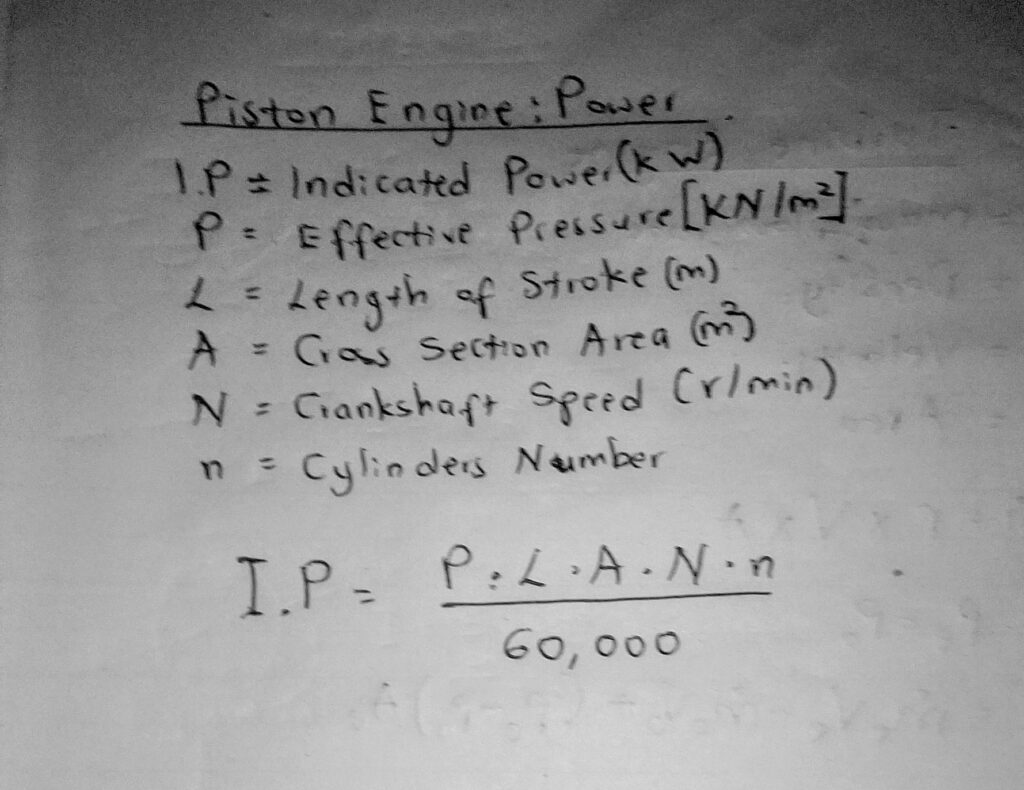POWER IN PISTON ENGINES: UNDERSTANDING AND DERIVING THE FORMULA.

THE CONCEPT OF POWER IN PISTON ENGINES:
A piston engine converts thermal energy from combustion into mechanical power through a series of reciprocating cycles. This power output defines the engine’s capability and drives various applications, from driving machines, propelling vehicles to generating electricity. Understanding the factors affecting power and its mathematical representation is crucial in combustion engine design and analysis.
FACTORS INFLUENCING POWER:
Several factors contribute to the power output of a piston engine:
Displacement: The total volume swept by the piston in one stroke, directly affecting the amount of air-fuel mixture available for combustion. Higher displacement generally translates to higher power potential.
Mean Effective Pressure (MEP): The average pressure acting on the piston during the power stroke, representing the effective force generating rotation. Higher MEP increases power output.
Engine speed (RPM): The number of revolutions the crankshaft completes per minute. More revolutions in a given time translate to more power strokes, potentially raising power output.
Efficiency: The fraction of thermal energy extracted from the combustion process converted into mechanical work. Improved efficiency implies less energy wasted as heat, allowing for higher power output from the same amount of fuel.
Deriving the power formula:
Based on these factors, the power (P) of a piston engine can be calculated using the following formula:
P = MEP * Engine Speed * Displacement / 2 * π where:
MEP: Mean Effective Pressure (in Pa)
Engine Speed: Rotational speed in revolutions per minute (RPM)
Displacement: Engine displacement in cubic meters (m³)
π: Constant value of pi (approximately 3.14159)
This formula gives a basic understanding of how power is related to the fundamental engine parameters. However, several other factors, such as friction losses, gas flow dynamics, and combustion characteristics, affect the actual power output. More complex engines with multiple cylinders and varying valve timing require more sophisticated formulas and computational tools for accurate power predictions.
ADDITIONAL INSIGHTS:
MEP maximization: Increasing MEP through techniques like turbocharging or intercooling can significantly boost power output while maintaining fuel efficiency.
Displacement limitations: Increasing displacement offers a straightforward way to gain power, but it also comes with drawbacks like increased size and weight. Engine designers seek effective balances between these factors.
Efficiency improvements: Enhancing combustion efficiency, minimizing friction losses, and optimizing heat management are crucial for achieving higher power output with reduced fuel consumption.
CONCLUSION:
The power of a piston engine is a complex interplay of various factors. Understanding their individual and combined effects through formulas and advanced modeling is essential for engineers to optimize engine performance, fuel efficiency, and emissions.
